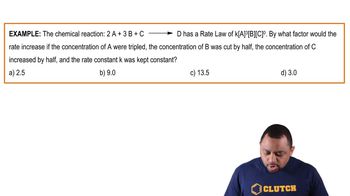Here are the essential concepts you must grasp in order to answer the question correctly.
Chemical Equilibrium
Chemical equilibrium occurs when the rates of the forward and reverse reactions are equal, resulting in constant concentrations of reactants and products. At equilibrium, the system's composition remains unchanged over time, and the equilibrium constant (K) can be used to express the ratio of product concentrations to reactant concentrations at this state.
Recommended video:
Chemical Equilibrium Concepts
Equilibrium Constant (K)
The equilibrium constant (K) is a numerical value that expresses the ratio of the concentrations of products to reactants at equilibrium, each raised to the power of their coefficients in the balanced chemical equation. It provides insight into the position of equilibrium; a large K indicates a reaction that favors products, while a small K suggests reactants are favored.
Recommended video:
Initial Concentrations and Changes
In equilibrium problems, the initial concentrations of reactants and products are crucial for determining how the system will shift to reach equilibrium. Changes in concentration, often represented by 'x', are calculated based on the stoichiometry of the reaction, allowing for the determination of equilibrium concentrations by applying the initial values and the changes that occur as the system stabilizes.
Recommended video:
Concentration Changes and Rate Law Example
 Verified step by step guidance
Verified step by step guidance


